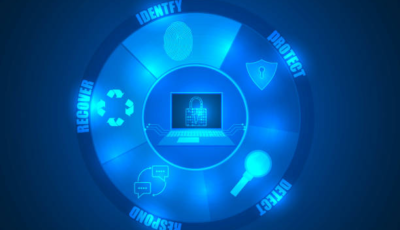In today’s digital age, cybersecurity is a critical concern for everyone. According to a recent report by AV Atlas, 3.1 new malware samples are being detected every second.
As such, NIST risk assessment plays a pivotal role in helping organizations identify and mitigate potential threats and vulnerabilities. Established frameworks like NIST (National Institute of Standards and Technology) act as a detailed blueprint that can help secure your assets and data.
In this blog post, we will explore the NIST 800-30 Risk Assessment Process, the various approaches, some common challenges, and how to overcome them. So let’s get started!
Why is Astra Vulnerability Scanner the Best Scanner?
- Runs 8000+ tests with weekly updated scanner rules
- Scans behind the login page
- Scan results are vetted by security experts to ensure zero false positives
- Integrates with your CI/CD tools to help you establish DevSecOps
- A dynamic vulnerability management dashboard to manage, monitor, assign, and update vulnerabilities from one place.
- Helps you stay compliant with SOC2, ISO27001, PCI-DSS, HIPAA, etc.
- Integrates with Slack and Jira for better workflow management
- Trusted by the brands you trust like Agora, Spicejet, Muthoot, Dream11, etc.

What is NIST Risk Assessment?
The National Institute of Standards and Technology (NIST) is a non-regulatory agency of the United States Department of Commerce. It develops cybersecurity standards, guidelines, best practices, and several other resources to cater to the cybersecurity needs of U.S. industry, federal agencies, and general public welfare.
It is responsible for developing information security standards and guidelines, including minimum requirements for federal information systems to provide a framework for organizations like yours to assess and manage their cybersecurity risks effectively.
Who needs Nist Risk Assessment?
Although the NIST risk assessment framework can help all businesses improve their security posture, it was primarily released to provide guidance for conducting assessments for critical governmental structures i.e. federal information systems and organizations.
Additionally, as per the Federal Information Security Modernization Act (FISMA), government contractors as well as companies that have a business relationship with federal agencies, need to carry out such assessments periodically.
What are the 3 Tiers of the NIST Risk Assessment?
Since a risk assessment holds varying importance to the different stakeholders of an organization, the National Institute of Standards and Technology came up with the following three-tiered approach to cater to the differentiated needs:
Tier 1: For the Organization
This level aims to assess the risk across all levels of the organization including the business and revenue model, the structure of accountability and authority, as well as the short and long-term objectives.
Tier 2: For the Business Process
This level aims to assess and identify the risks in various business processes such as sales, marketing funnels, financial decisions, customer journeys, core service operations, and human resource management.
Tier 3: For the Information Systems
This level aims to evaluate the technical inflow, outflow, storage, and processing of the digital assets of the company. This often includes analyzing the online and offline systems, mobile and web applications, cloud infrastructures, as well as overall data flows.
What is the NIST Cybersecurity Framework (CSF) & Risk Assessment?
The NIST Cybersecurity Framework is a voluntary framework that provides you with an outline of best practices such as the NIST 800-30 risk assessment to help you understand, manage, and reduce your cybersecurity risk. It involves five key functions that work together to help you manage cybersecurity risks effectively.
1. Identify:
This function helps you understand various cybersecurity risks by developing an inventory of assets, identifying vulnerabilities, and assessing the potential impact of such cybersecurity risks on your digital assets.
2. Protect:
This function helps your organization implement safeguards by developing and implementing appropriate security controls to guard against digital threats.
3. Detect:
This function helps you identify weaknesses and vulnerabilities promptly by developing and implementing appropriate monitoring and detection capabilities.
4. Respond:
This function helps you respond to cybersecurity incidents efficiently by developing and implementing appropriate response procedures to mitigate the impact of cybersecurity incidents.
5. Recover:
Lastly, this function helps you recover from cybersecurity incidents and restore normal operations by developing and implementing appropriate recovery procedures to restore systems and data after a cybersecurity incident.
The NIST CSF Risk Assessment is equivalent to a roadmap for organizations to streamline their risk assessment strategies. It provides a structured and well-defined approach to risk assessment with room to accommodate your specific needs and requirements.
What is the NIST 800-30 Risk Assessment Process?
The goal of special publication 800-30 is to offer directions on how to conduct risk assessments based on industry suggestions and standards. NIST RMF is specifically used to carry out NIST risk assessments and explain cyber risks in a way that both technical and non-technical members of the Board and C-Suite can grasp.
The NIST 800-30 risk assessment process consists of five critical steps:
1. System Characterization:
This stage recognizes the limits of your system, its parts, and how your data moves within it. It identifies your system’s purpose, aims, and goals, along with how important and sensitive the system’s information is with the aim of setting boundaries and getting a holistic context for evaluation.
2. Threat Identification:
This step aims to identify the types of threats that could affect your system, such as natural disasters, human errors, or malicious attacks. It also helps you identify the threat sources, motives, and capabilities.
3. Vulnerability Identification:
This step pinpoints your system’s weaknesses and vulnerabilities that could be exploited by any malicious actor, including vulnerabilities in your system’s hardware, software, and firmware components, as well as the system’s configuration, architecture, and design.
4. Risk Assessment:
This step assesses the likelihood and impact of the previously identified vulnerabilities on your system and organization. It analyzes the threats identified in the previous steps to determine the likelihood and probability of the threats occurring and the impact they would have on the system.
5. Control Recommendations:
The last step lists and recommends appropriate controls to mitigate the above risks. It includes selecting controls based on your system’s risk tolerance, cost-effectiveness, and feasibility. The controls can be administrative, technical, or physical in nature.
What is the NIST Risk Assessment Methodology?
The NIST risk assessment methodology is a structured and, flexible process for managing cybersecurity risks. It consists of two aspects: the iterative process and the continuous aspect.
Although both follow the same process as provided above, the iterative aspect of the NIST risk assessment methodology focuses on analyzing the various risks at specific points in time in a company’s infrastructure.
Conversely, the continuous aspect as the name suggests, emphasizes real-time monitoring and analysis of the organization’s assets to keep track of all new and emerging threats. It aims to leverage AIML and automated tools for the same.
What is the Significance of NIST Risk Assessment?
NIST cyber risk assessment acts as a proactive measure against potential cyber threats and vulnerabilities, helping you identify and mitigate risks before they can cause harm. Here are some benefits that highlight the significance of NIST risk assessments:
1. Minimize Loss:
It plays a crucial role in preventing financial losses, reputation damage, and legal implications resulting from security breaches. By identifying and evaluating potential risks, it helps you implement appropriate controls and safeguards to protect your systems and sensitive data.
2. Enhance Credibility and Trustworthiness:
Adherence to best practices and guidelines like NIST helps enhance your credibility and trustworthiness as it demonstrates a commitment to cybersecurity and instills confidence in your customers, partners, and stakeholders.
3. Proactive Risk Management:
Such an assessment also enables your business to take a proactive approach to risk management. By identifying and assessing potential threats and vulnerabilities, you can prioritize your resources and efforts to address the most critical risks, thus, allocating resources effectively.
4. Compliance with Regulatory Requirements:
Many regulatory frameworks, such as HIPAA and PCI DSS, require organizations to conduct risk assessments to ensure the security of sensitive data. By following NIST guidelines, organizations can meet these compliance obligations.
5. Improved Decision-Making:
It helps your organization make informed decisions regarding resource allocation, investment in security controls, and prioritization of risk mitigation efforts, enabling you to optimize your cybersecurity strategies and make targeted choices to protect your systems and data.
How can Astra help?
Astra is a leading provider of NIST penetration testing services. We equip organizations like yours with the necessary resources such as NIST vulnerability scanning to meet standards, improve how they handle risks, and safeguard their networks from both inside and outside dangers.
Being a reliable ally for major businesses, we possess the knowledge, experience, and proficiency to smoothly incorporate penetration testing, vulnerability assessments, and security management into your current procedures. Astra’s penetration testing is fully aligned with compliance requirements, whether it’s NIST, PCI DSS, or any other standard.
Although there are several NIST risk assessment checklists available, many organizations continue to face some cybersecurity challenges in today’s digital landscape. Here are the top three common challenges and strategies for overcoming them:
1. Resource Constraints:
You may struggle with limited resources, including budget, staff, and technology. These constraints can hinder your ability to implement robust cybersecurity measures. To overcome this challenge, your company can consider the following strategies:
- Prioritize Critical Assets: Identify the most critical assets and focus resources on protecting them first. This approach ensures that limited resources are allocated effectively.
- Collaborative Resource Planning: Engage stakeholders from different departments to collaborate on resource planning. By involving various teams, you can leverage their expertise and optimize resource allocation.
- Leverage Automation Tools: Implementing automation tools can help you streamline repetitive tasks, freeing up resources for more critical cybersecurity activities and enhance efficiency and effectiveness in managing security controls and monitoring systems.
2. Complex Systems and Environments:
Most businesses (including yours) often operate in complex IT environments with interconnected systems, diverse technologies, and third-party integrations. This complexity can make it challenging to identify and address cybersecurity risks. The following strategies can help you overcome this challenge:
- Breakdown Approach for Complex Systems: Break down complex systems into manageable components for risk assessment to focus on specific areas and understand the associated risks more effectively.
- Engage Subject Matter Experts: Collaborate with subject matter experts who have in-depth knowledge of specific technologies or systems. They can provide valuable insights and help you identify vulnerabilities and appropriate risk mitigation techniques.
- Use Architectural Models for Visualization: Utilize architectural models to visualize the interconnectedness of systems and their potential vulnerabilities to understand the impact of risks and develop targeted management strategies.
3. Lack of Clear System Characterization:
Your business may also struggle with incomplete or unclear system characterization, making it difficult to assess risks accurately. The following strategies can help you overcome this challenge:
- Enhance System Documentation: Improve your system documentation to ensure a clear understanding of system components, data flows, and dependencies. This documentation should include information about assets, configurations, and access controls.
- Conduct Interviews and Workshops: Engage stakeholders, system administrators, and users through interviews and workshops to gather information about the system. This collaborative approach can help fill gaps in system characterization and provide valuable insights.
- Continuously Refine System Characterization: System characterization is an ongoing process. Regularly review and update system documentation to reflect changes in the IT environment, such as system upgrades, new technologies, or organizational changes.
Bottom Line
In conclusion, NIST risk assessment is a critical component of modern cybersecurity strategies. They help you identify and mitigate potential threats and vulnerabilities, and prevent financial losses, reputation damage, and legal implications resulting from security breaches.
Astra’s pentest suite can help organizations achieve NIST compliance and enhance their overall cybersecurity posture. By navigating the NIST privacy risk assessment process, organizations can continuously improve their security posture and protect their critical assets.
















